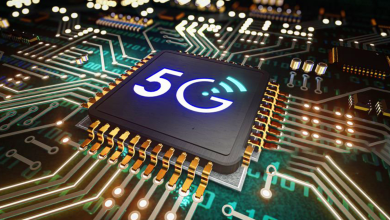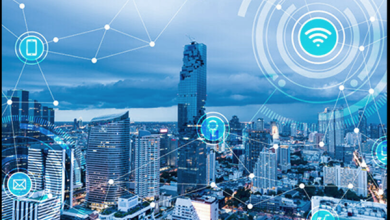
Introduction
The world of telecommunications is on the verge of a monumental transformation, Power of 5G Internet and it goes by the name of 5G. The fifth generation of wireless technology promises to revolutionize the way we connect, communicate, and interact with the digital realm. As we step into the future, this article explores the remarkable potential of 5G Internet, shedding light on what makes it so revolutionary and the myriad ways it will impact our lives. 
Understanding 5G Internet
To grasp the significance of 5G, it’s essential to understand what sets it apart from its predecessors. In essence, 5G is the next evolutionary step in wireless technology, succeeding 4G. Its key characteristics include:
- Speed: 5G is expected to deliver speeds up to 100 times faster than 4G. This means that downloading large files, streaming high-definition content, and online gaming will be smoother and virtually lag-free.
- Low Latency: With latency reduced to a minimum, 5G ensures real-time interactions, making it a game-changer for applications like augmented reality (AR), virtual reality (VR), and telemedicine.
- Massive Connectivity: 5G can support a significantly larger number of devices per square kilometer. This will be crucial for the Internet of Things (IoT), where billions of devices will be interconnected.
- Reliability: 5G is designed to be more reliable than its predecessors, ensuring seamless connectivity even in crowded areas or during network congestion.
- Energy Efficiency: Although 5G will be faster and more powerful, it is designed to be more energy-efficient, helping reduce the carbon footprint of telecommunications.

How 5G Works
5G relies on a combination of technologies, including advanced antennas, smaller cell towers, and higher-frequency radio waves. These elements work together to offer superior performance compared to 4G.
- Millimeter Waves: 5G uses higher-frequency bands, often referred to as millimeter waves. These waves can transmit large amounts of data but have a shorter range. To compensate for this, 5G networks employ a denser network of small cell towers.
- Small Cells: Instead of relying solely on large cell towers, 5G networks incorporate a plethora of small cell stations. These stations are strategically placed in urban areas to ensure consistent, high-speed connectivity.
- Beamforming: Beamforming technology allows 5G networks to focus signals directly at a user’s device, rather than broadcasting in all directions. This increases efficiency and minimizes interference.
Applications of 5G Internet
The potential applications of 5G are vast and span across numerous industries. Here are some areas where 5G is set to make a significant impact:
- Enhanced Mobile Experience: Mobile users will see an immediate benefit from 5G in the form of faster download and upload speeds, smoother streaming, and more responsive online gaming.
- Augmented and Virtual Reality: 5G’s low latency and high bandwidth make it ideal for AR and VR applications. This can revolutionize entertainment, gaming, and even education with immersive experiences.
- IoT and Smart Cities: With the ability to connect a vast number of devices simultaneously, 5G is a key enabler for the IoT. This means smart cities, connected vehicles, and efficient energy management can become a reality.
- Telemedicine: The reduced latency in 5G will enable real-time, high-quality video consultations between patients and healthcare providers, potentially saving lives in critical situations.
- Autonomous Vehicles: 5G can provide the communication infrastructure needed for autonomous vehicles to operate safely and efficiently. These vehicles will be able to communicate with each other and with traffic infrastructure.
- Industry 4.0: In the industrial sector, 5G can enhance automation and remote control, enabling more efficient and flexible manufacturing processes.

Challenges and Concerns
Power of 5G Internet While 5G holds immense promise, it also presents certain challenges and concerns:
- Infrastructure Investment: Deploying 5G networks requires a substantial investment in new infrastructure, including small cell towers and updated hardware. This can be a financial burden for telecom companies.
- Security: With the proliferation of devices and data on 5G networks, cybersecurity becomes a paramount concern. Ensuring the safety and privacy of users’ data is a significant challenge.
- Health Concerns: Some individuals have expressed concerns about the potential health risks of exposure to higher-frequency radio waves. However, extensive research is ongoing to determine the actual risks.
- Digital Divide: Not all regions will have equal access to 5G technology, potentially exacerbating the digital divide between urban and rural areas.
Conclusion
Power of 5G Internet 5G Internet is poised to redefine our digital landscape, offering unprecedented speed, low latency, and massive connectivity. The potential applications are vast, spanning from enhanced mobile experiences to revolutionizing entire industries. However, challenges such as infrastructure investment, security, and the digital divide must be addressed.
As 5G networks continue to roll out worldwide, the transformative impact on our daily lives and society as a whole will become increasingly evident. The future of connectivity is fast, reliable, and immersive, and it’s called 5G Internet.





